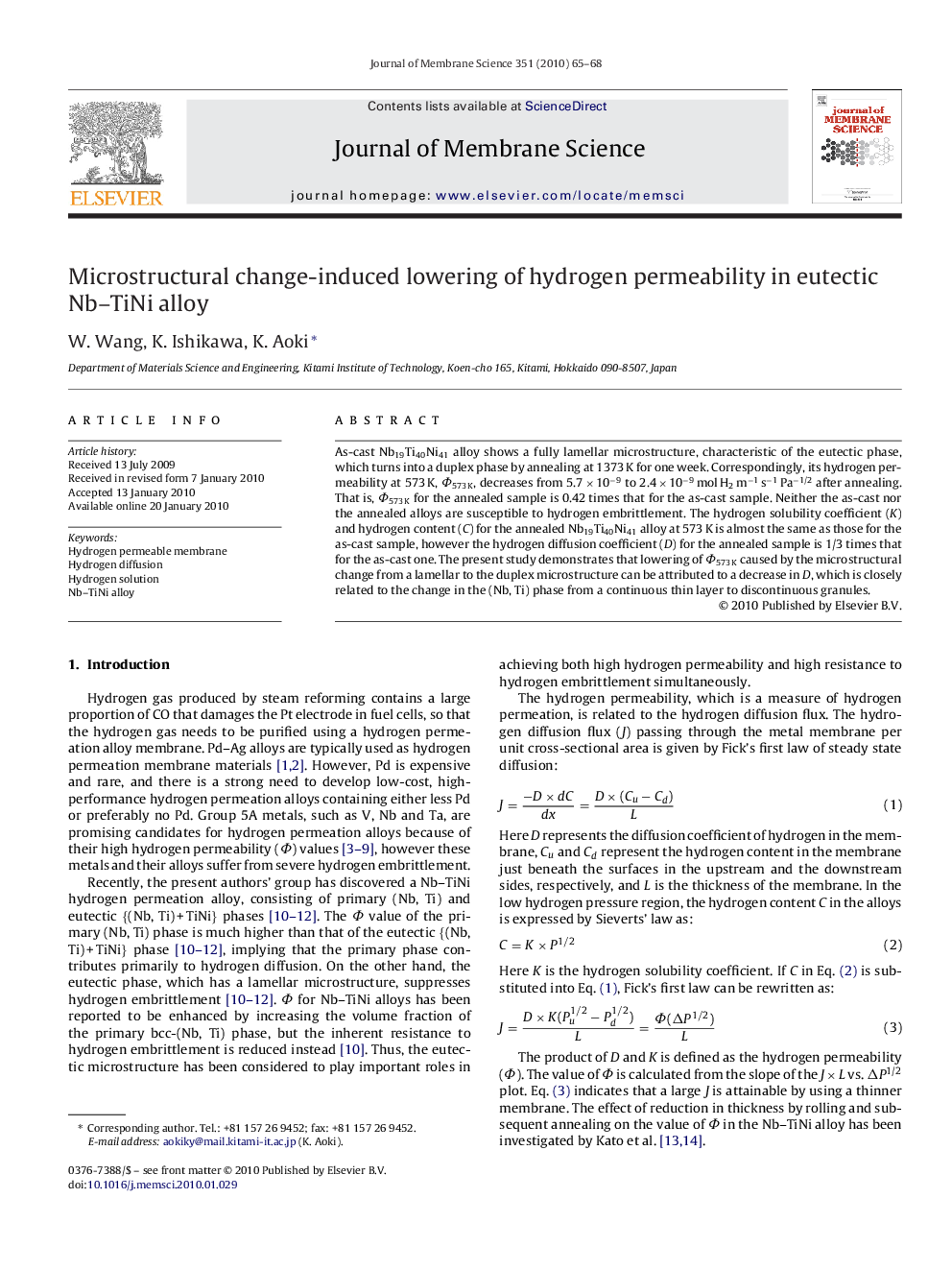| Article ID | Journal | Published Year | Pages | File Type |
|---|---|---|---|---|
| 636515 | Journal of Membrane Science | 2010 | 4 Pages |
As-cast Nb19Ti40Ni41 alloy shows a fully lamellar microstructure, characteristic of the eutectic phase, which turns into a duplex phase by annealing at 1373 K for one week. Correspondingly, its hydrogen permeability at 573 K, Φ573 K, decreases from 5.7 × 10−9 to 2.4 × 10−9 mol H2 m−1 s−1 Pa−1/2 after annealing. That is, Φ573 K for the annealed sample is 0.42 times that for the as-cast sample. Neither the as-cast nor the annealed alloys are susceptible to hydrogen embrittlement. The hydrogen solubility coefficient (K) and hydrogen content (C) for the annealed Nb19Ti40Ni41 alloy at 573 K is almost the same as those for the as-cast sample, however the hydrogen diffusion coefficient (D) for the annealed sample is 1/3 times that for the as-cast one. The present study demonstrates that lowering of Φ573 K caused by the microstructural change from a lamellar to the duplex microstructure can be attributed to a decrease in D, which is closely related to the change in the (Nb, Ti) phase from a continuous thin layer to discontinuous granules.
